INSECT ID
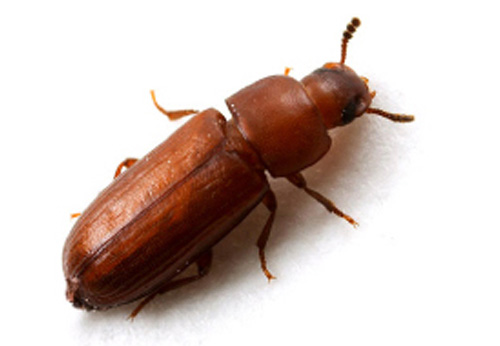 Insect & Pest Identification
Insect & Pest Identification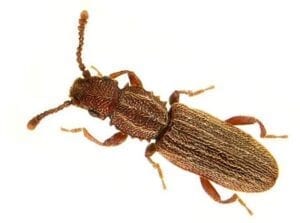
Correct identification of the pest is key to determining the methods of management required. These photos and descriptions can be used to help identify the pests you may be experiencing at your Agri-Food establishments.
-
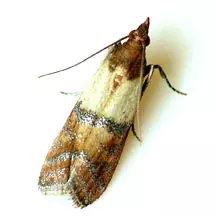
Indian Meal Moth
Indian meal Moth Plodia interpunctella, is a very common household pest, feeding principally on stored food products. In fact, it has been called the most important pest of stored products in North America. The larvae are general feeders and can be found in grain products, seeds, dried fruit, dog food, and spices.
Indian Meal Moth
-
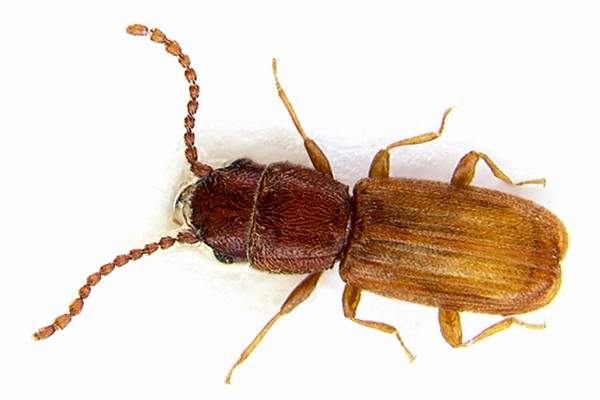
Rusty Grain Beetle
The Rusty rain Beetle,(Cryptolestes ferrugineus)This beetle is the most serious pest of stored grain in most regions of Canada. It usually feeds on the germ, that is, the embryo, of a whole seed. Heavy infestations cause grain to spoil and heat.
The adult:
- Is a flat, rectangular, shiny, reddish-brown beetle
- Is 0.2 centimetres long
- Has long, bead-shaped antennae that project forward in a V
- Moves rapidly in warm grain and can fly when the air temperature is above 23°C.
Both the larvae and adults feed on the germ and on damaged kernels and wheat dust. The tiny larvae penetrate and feed on the germ of damaged kernels.
Rusty Grain Beetle
-
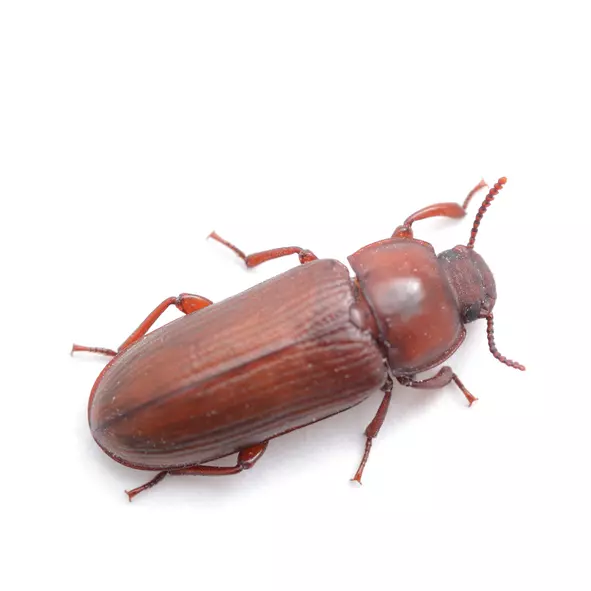
Confused Flour Beetle
Confused Flour Beetle (Tribolium confusum) is a common pest insect known for attacking and infesting stored flour and grain. They are one of the most common and most destructive insect pests for grain and other food products stored in silos, warehouses, grocery stores, and homes.Eggs hatch in 5-12 days, and the larvae can mature within 30 days or as long as 120 days depending on temperature.
Confused Flour Beetle
-
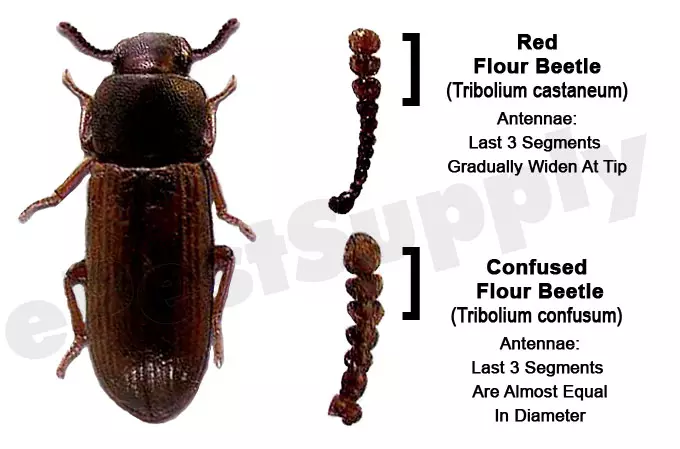
Red vs Confused Flour Beetle
- Last 3 antenna segments of the Red flour beetle come to a club.
- Confused flour beetle antenna segments enlarge gradually
- Red Flour beetle can fly, Confused flour beetle can not.
- Red Flour beetle are found in grain in storage. Confused flour beetle are found in milled/processed grains and in warehouses.
Red vs Confused Flour Beetle
-

Red Flour Beetle
Red Flour Beetle(Tribolium castaneum)is a common insect pest that originates from infested grain or from dry, stored food products, particularly, cereal products such as flour, cake mix, cornmeal, dry pet food,etc. They are usually found in grains in storage and can fly.Eggs hatch in 5-12 days, and the larvae can mature within 30 days or as long as 120 days depending on temperature.
Red Flour Beetle
-
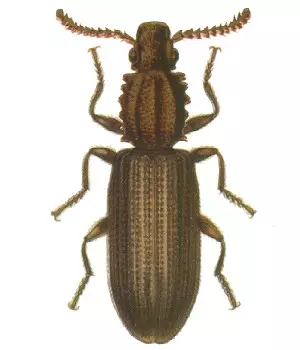
Merchant Grain Beetle
Merchant Grain Beetle,(Oryzaephilus mercator), is a small, flattened beetle about 2.5mm in length. It is a common, worldwide pest of grain and grain products as well as fruit, chocolate, drugs, and tobacco. The biology of O. mercator is nearly identical with the Saw Toothed Grain Beetle
Merchant Grain beetle
-
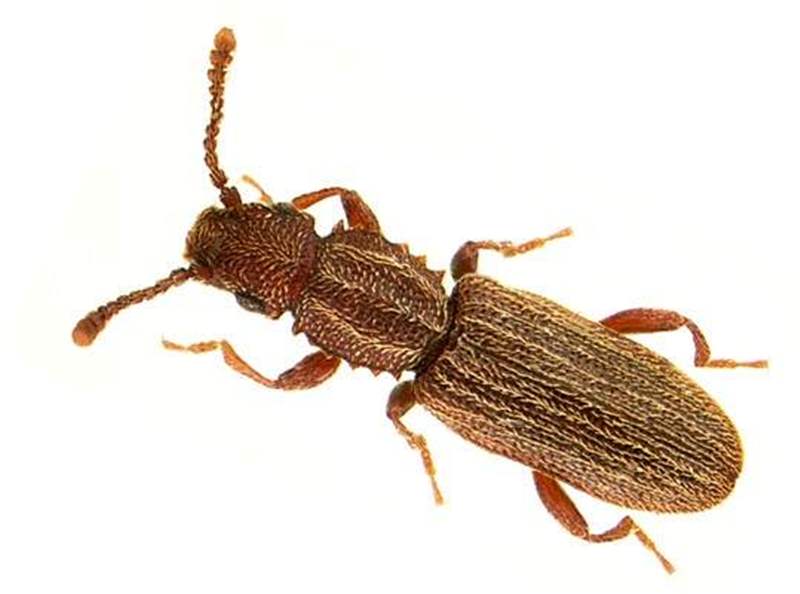
Sawtoothed Grain Beetle
Sawtoothed Grain Beetle, (Oryzaephilus surinamensis) is an insect pest in stored grain and a common pest found in dry, stored food products. Saw Toothed grain beetles attack almost any dry food but are most likely to be found in cereal products such as flour, cake mix, cornmeal, and macaroni and other items such as bread, dried fruits, nuts, chocolate and dry pet food.
Sawtoothed Grain Beetle
-
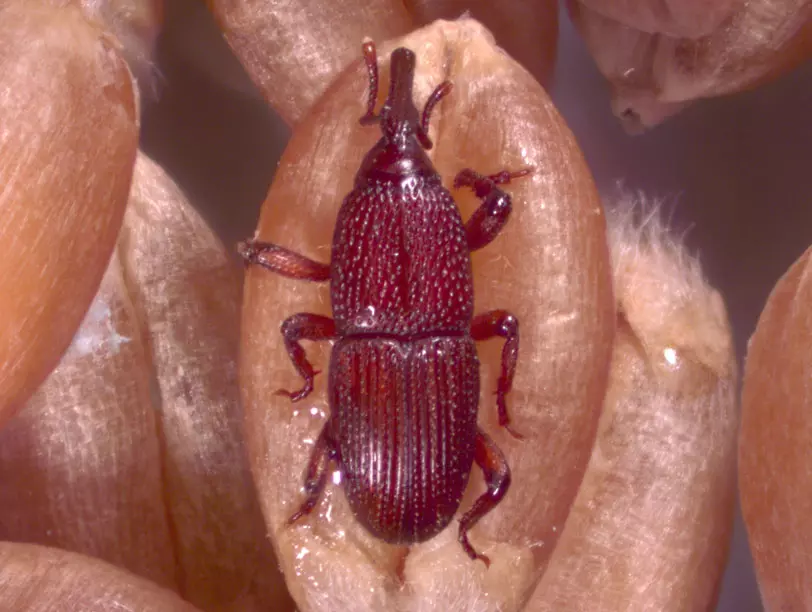
Granary Weevil
Granary Weevil, (Sitophilus granarius) is an insect that feeds on cereal grains, and is a common pest throughout Canada. It can cause significant damage to harvested stored grains and may drastically decrease crop yields. Adults are unable to fly. Females lay 150 eggs over their 7- to 8-month lifespan.
Females individually lay eggs within kernels.
Granary Weevil
-
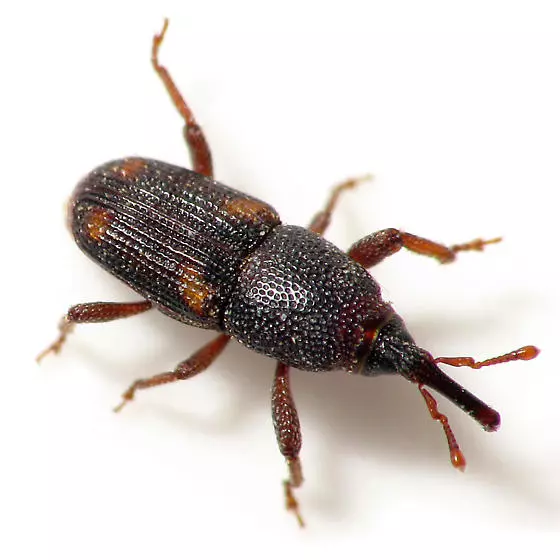
Rice Weevil
Rice Weevil, (Sitophilus oryzae) is a stored product pest which attacks several crops, including wheat, rice, and corn.Adults feed on whole seeds or flour.Feeding contributes to heating and infested grain is often damp due to moisture added by the insects’ respiration. Adults are able to fly and live 4 to 5 months.Females generally lay eggs within a kernel. Adults make a small, circular emergence hole
Rice Weevil
-
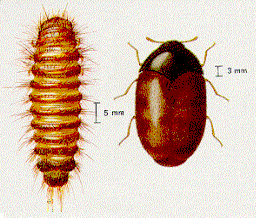
Black Carpet Beetle
Black carpet Beetle,(Attagenus unicolor) Adults are uniformly dark brown to black with dark or gold brown hairs. Adults fly, are 2.8 to 3.0 mm long and are short lived. Larvae are reddish-brown in color reaching a length of 6 to 8 mm. Larvae have a tuft of brown hairs at the posterior end. Can feed on household items including wool articles, some synthetic fibres, cereal products and dried pet food
Black Carpet Beetle
-
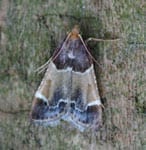
Meal Snout Moth
Meal Snout Moth, (Pyralis farinalis: Pyralinae) – pest of stored grain, flour and other cereals. When at rest, the moth has its wings extended.
Meal Snout Moth
-
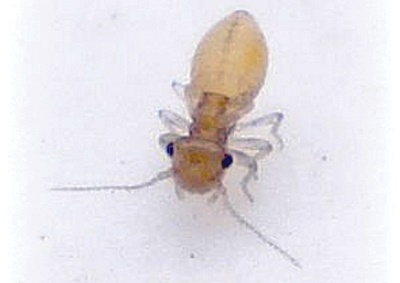
Psocids
Psocids (Psocoptera) are tiny insects that live in damp environments. They eat mold and mildew. They are Secondary pest, Scavengers that are quite small, 1 mm or less in length. Larger pale booklouse can reach lengths of 2 mm, similar to some stored-product beetles.Infestations develop in grain with moisture content higher than 14%. Booklice are often associated with presence of moulds.
Psocids
-
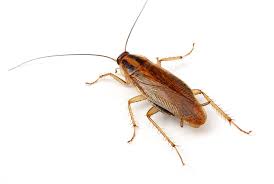
German Cockroach
German Cockroach,(Blattella germanica) is the most common species of cockroach found in Canada. It is typically about 1.1 to 1.6 cm (0.43 to 0.63 in) long. In colour it varies from tan to almost black.
German Cockroach
-
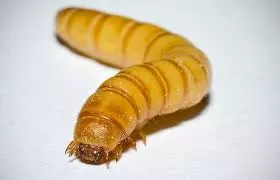
Yellow Meal Worm
Yellow Mealworm, (Tenebrio molitor L.) Is a Secondary pest; Fungus feeder and scavenger of the Order: Coleoptera. Adults are large (12 to 18 mm), dark brown or black shiny beetles. Larvae are initially white, but as they mature they turn a characteristic yellow and reach a length of 30 mm at maturity.
The yellow mealworm is the largest of the insect species that attack stored grain and grain products.
Yellow Mealworm
-
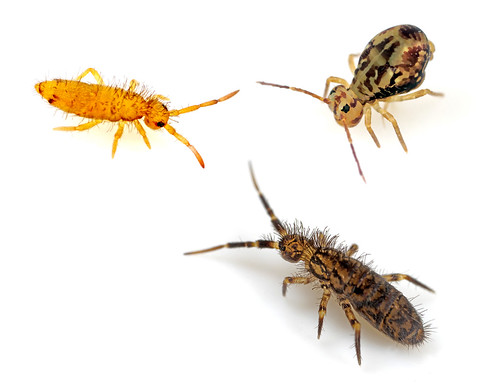
Springtails
Springtails, also known as snow fleas, are small hexapods that utilize a protein in their body that allows them to survive harsh winter temperatures. They are actually not fleas but get their nick name from their ability to jump from place to place, an action similar to that of fleas.
Springtails
-
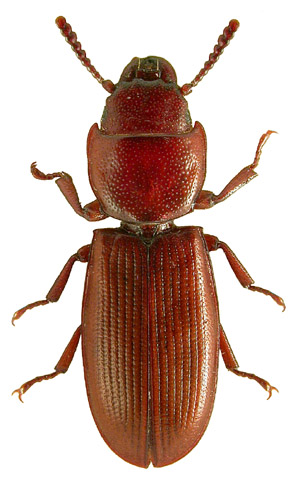
Cadelle
Cadelle, (Tenebroides mauritanicus) Adults are shiny black to brown beetles that range in size from 6 to 11 mm. Larvae are whitish in colour with a black head. Females lay eggs in batches of 10 to 60 in the food supply. Cadelles prey on other stored-product insects. Larvae and adults will also eat holes in flour sacks and food cartons.
Cadelle
-
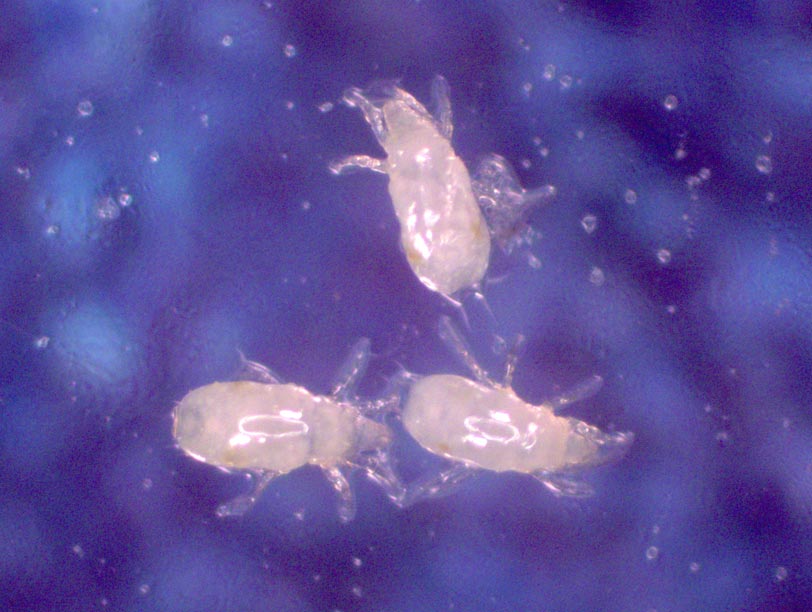
Grain Mites
Grain Mites,( Acarus siro ) Secondary pest; Grain and fungal feeder. Of the Order: Acarina, Family: Acaridae. Mites are white and very small (less than 1 mm in length). Mites are soft bodied and have only a single body part. Signs of infestation is Grain dust may appear to be moving, actually mites are moving. Very high mite populations cause a sweet odour. Damage to
the germ of grain which is often completely destroyed. Food may be rendered unusable for consumption.
Grain Mites
-
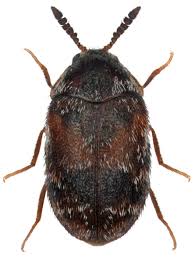
Khapra Beetle
Khapra Beetle, (Trogoderma granarium) Primary pest; grain feeder; quarantine pest of the Order: Coleoptera, Family: Dermestidae. Commodities affected are Grains and oilseeds, maltings, dried vegetable seeds. Larvae initially feed on damaged grain pieces. As larvae mature, they are able to attack whole grains. Larvae may completely destroy commodity.
